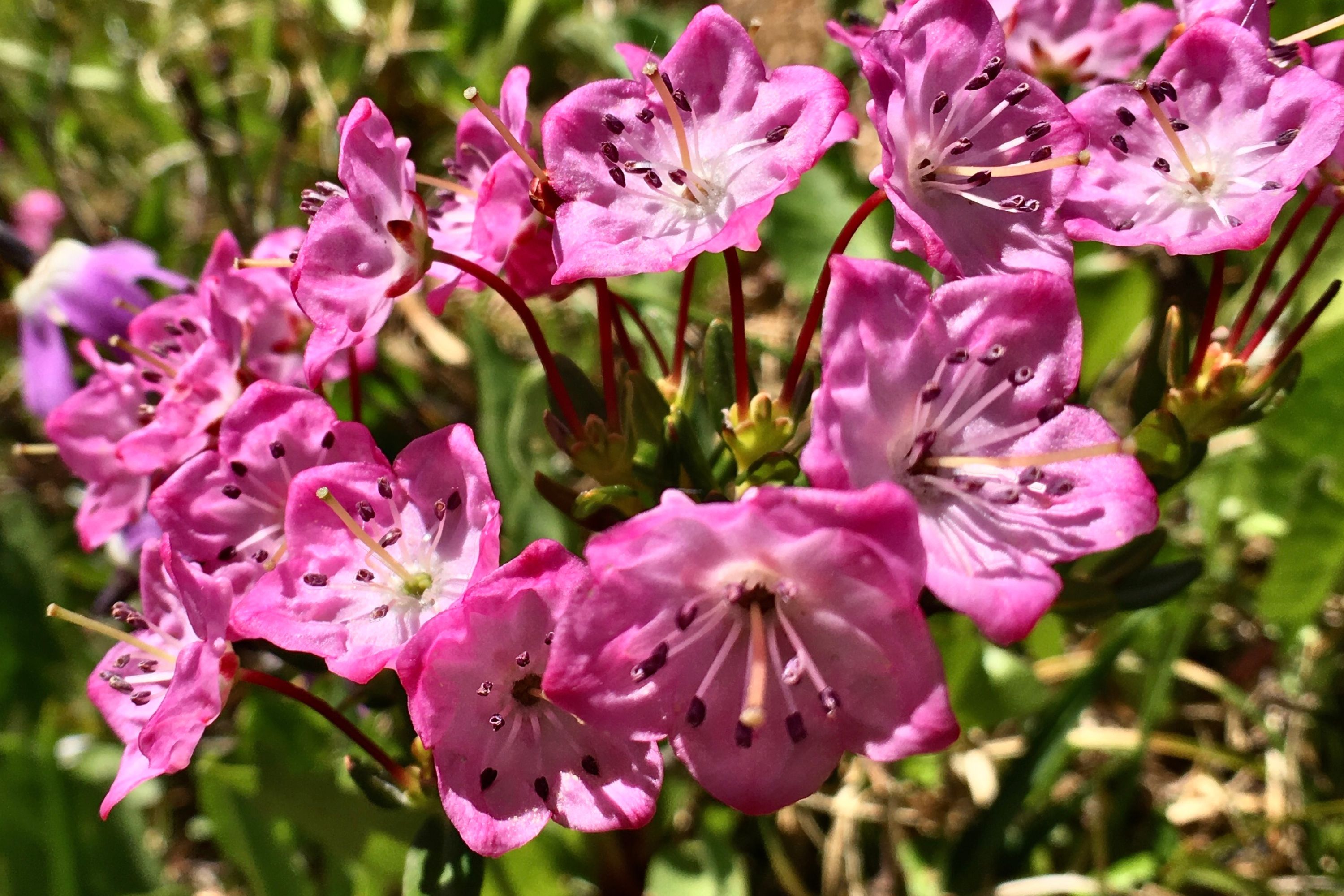Kalmia glauca
(Kalmia polifolia)

Description
Kalmia polifolia, previously known as Kalmia glauca and commonly called bog laurel, swamp laurel, or pale laurel, is a perennial evergreen shrub of cold acidic bogs, in the family Ericaceae. It is native to north-eastern North America, from Newfoundland to Hudson Bay southwards. The genus 'Kalmia' is named after Pehr Kalm, a Swedish-Finn botanist, who was a student of Linnaeus. The species name, 'polifolia', is Latin for 'pole-leaves' or 'pole-petals'. The former species name, 'glauca', is Latin for gleaming or gray, a word ultimately derived from the Ancient Greek, meaning blue-green or blue-gray. Kalmia polifolia flowers in April and is pollinated by bees. Bees, however, after pollinating this plant, produce a poison honey. Its seeds ripen in September. These seeds are five-parted, round, and woody. Kalmia is a genus of about ten species of evergreen shrubs from 0.2–5 m tall, in the family Ericaceae. They are native to North America (mainly in the eastern half of the continent) and Cuba. They grow in acidic soils, with different species in wet acid bog habitats (K. angustifolia, K. polifolia) and dry, sandy soils (K. ericoides, K. latifolia). Kalmia was named by Linnaeus to honour his friend the botanist Pehr Kalm, who collected it in eastern North America during the mid-18th century. Earlier Mark Catesby saw it during his travels in Carolina, and after his return to England in 1726, imported seeds. He described it, a costly rarity, in his Natural History of Carolina, as Chamaedaphne foliis tini, that is to say "with leaves like the Laurustinus"; the botanist and plant-collector Peter Collinson, who had begged some of the shrub from his correspondent John Custis in Virginia, wrote, when his plants flowered, that "I Really Think it exceeds the Laurus Tinus." The leaves are 2–12 cm long and simple lanceolate. The flowers are white, pink or purple, in corymbs of 10-50, reminiscent of Rhododendron flowers but flatter, with a star-like calyx of five conjoined petals; each flower is 1–3 cm diameter. The fruit is a five-lobed capsule, which splits to release the numerous small seeds. The foliage is toxic if eaten, with sheep being particularly prone to poisoning, hence the name lambkill used for some of the species. Other names for Kalmia, particularly Kalmia angustifolia, are sheep-laurel, lamb-kill, calf-kill, kill-kid, and sheep-poison, which may be written with or without the hyphen.
Taxonomic tree:







